¡HOLA! BIENVENIDO A MÉXICO.
FUN FACTS
- There are 31 states in Mexico including the capital, Mexico City.
- Mexico is home to the largest pyramid in the world, the Great Pyramid of Cholula. This pyramid stands at 180 feet tall and measures 1,480 square feet at its base. The Great Pyramid of Cholula can be found in Cholula, Puebla Mexico.
- Chocolate originated in Mexico! The Aztecs and the Myans were ancient civilizations that first cultivated the cacao plant thousands of years ago. “Chocolate” has been translated from the Aztec word “xocoatl,” which referred to a bitter drink brewed from cacao beans.
- The longest and largest underwater cave system in the world is found in Mexico. Cenotes are freshwater sinkholes making up miles of caves and caverns below the ground and water.
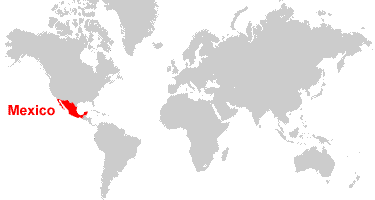

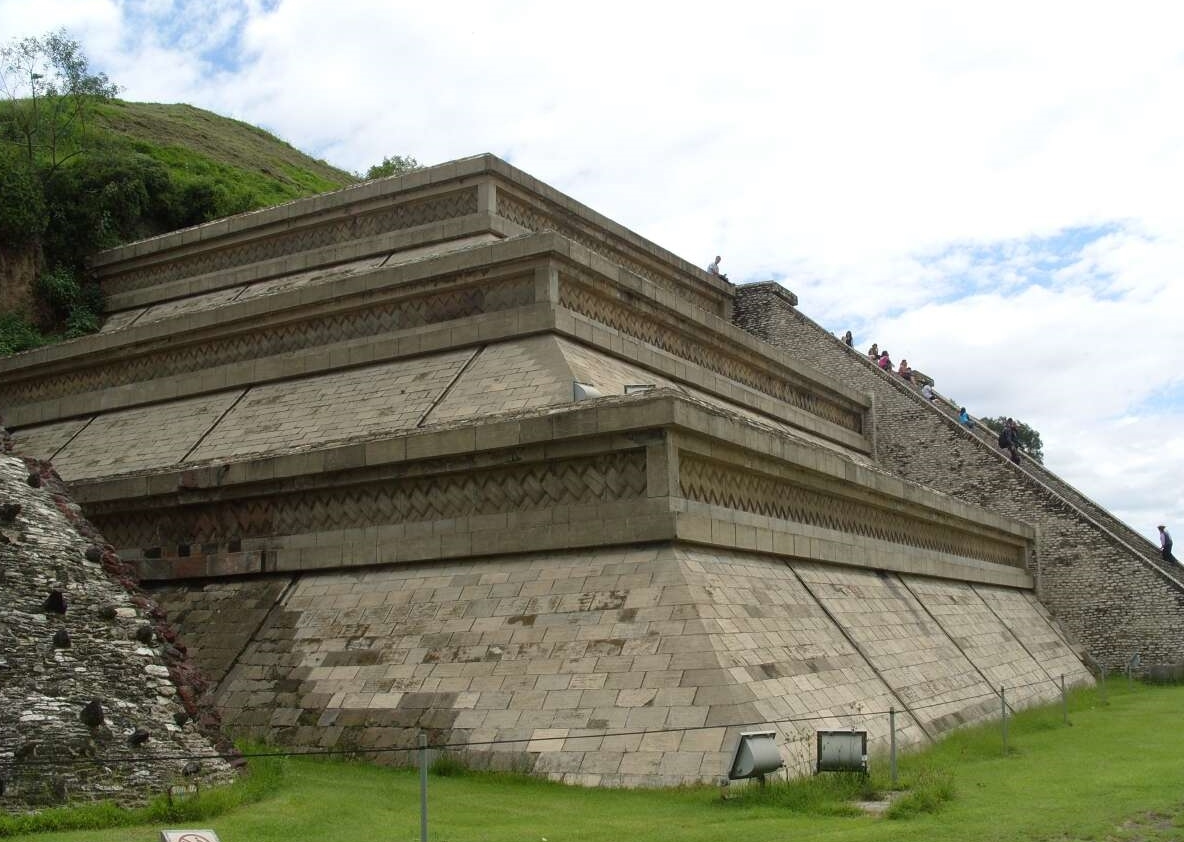
LET’S TAKE A VIRTUAL TOUR OF MÉXICO
Mexico is a country characterized by its vibrant colores (colors), delicious comida (food), beautiful cultura y tradiciones (culture and traditions) and continued resiliencia (resilience).
Then virtually explore Mexico City.
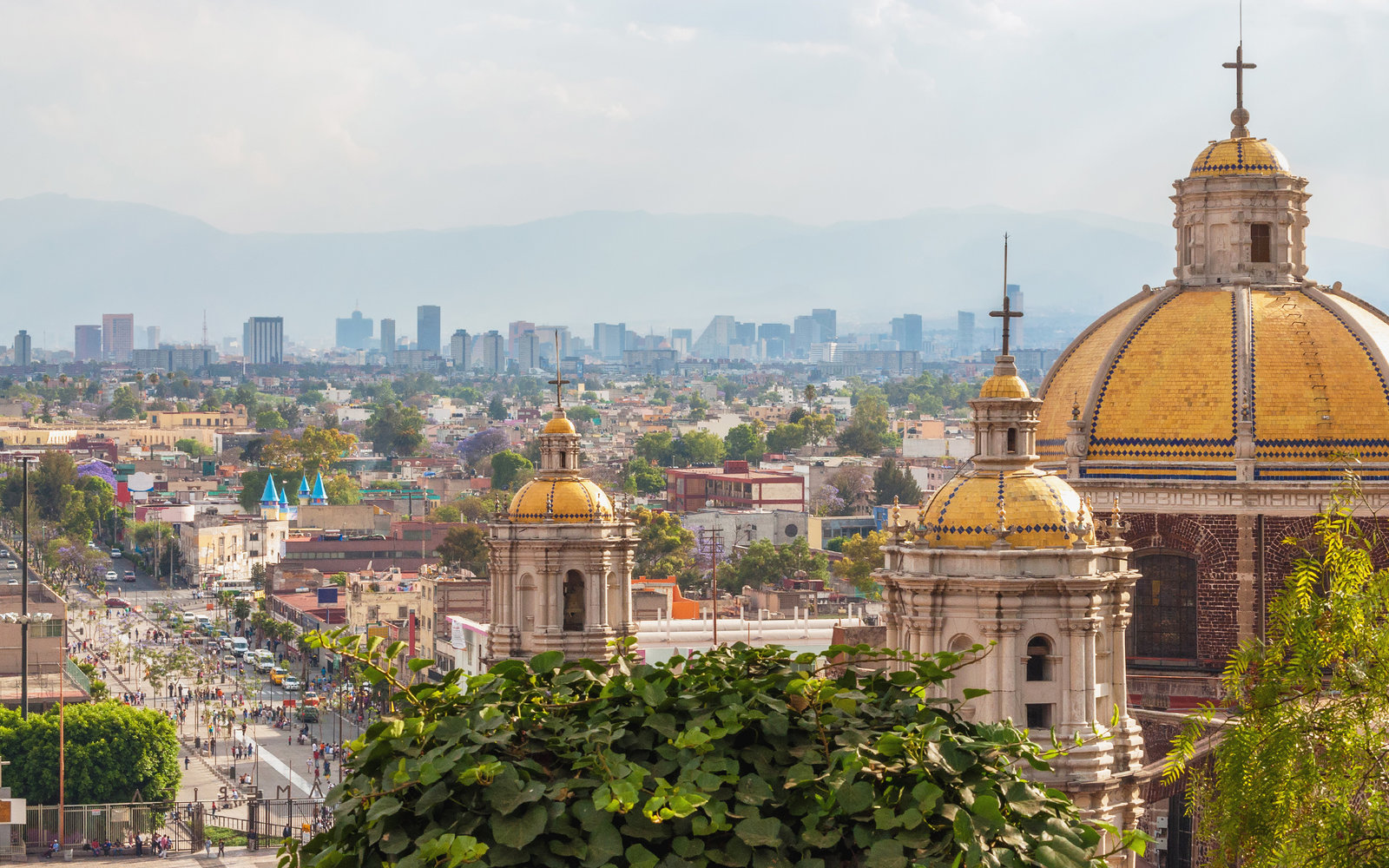
LANGUAGES OF MEXICO
The official language of Mexico is Spanish, but 68 indigenous languages are also recognized! You can hear two of the most common languages other than Spanish here.
Playing games can be a fun way to learn another language. Click the button below to get started on PBS Kids.
If you have a library card, you can learn Spanish on Muzzy, too. It’s made for kids and is easy to use on a phone or tablet with a free app.
Nahuatl
Nahuatl is spoken by 1.7 million people in Central Mexico.
Yucatan Mayan
Yucatan Mayan is spoken by 850,000 people in Southeastern Mexico.
FRIDA AND DIEGO
Learn about two of Mexico’s most well-known artists and virtually explore and experience some of their work that is on display in museums in the United States and Mexico.
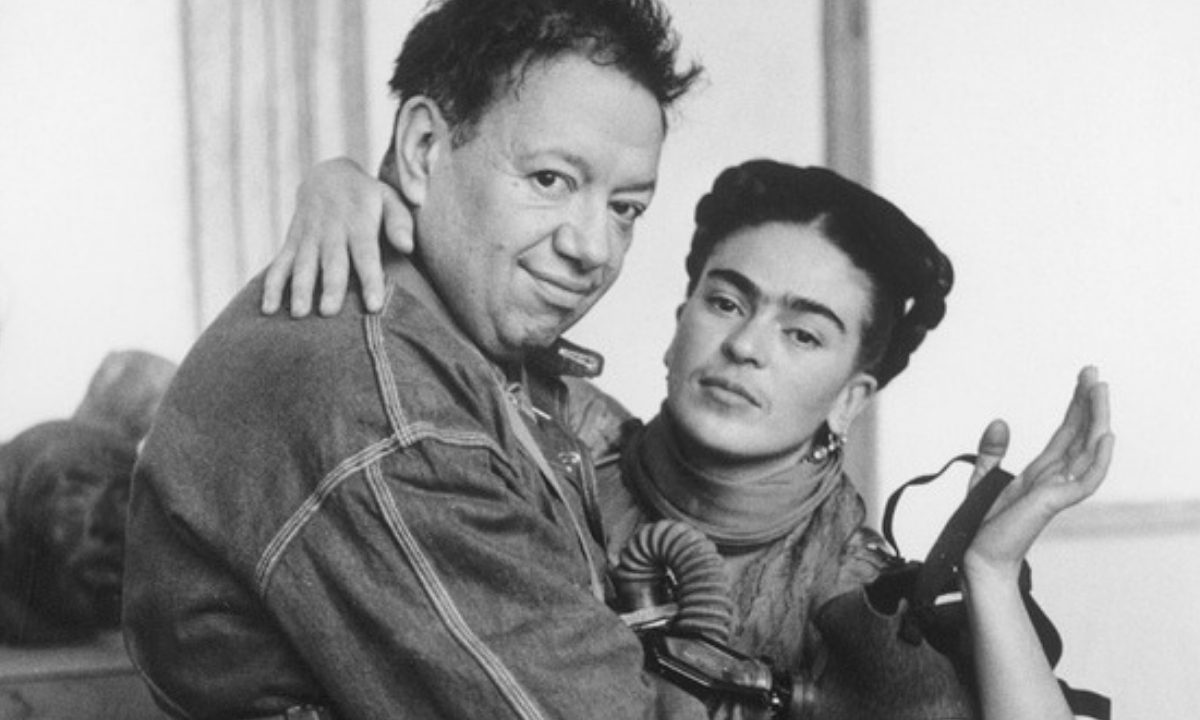
Diego Rivera (1856-1957)
Diego was born in Guanajuato, Mexico and is considered one of the most ambitious and boundary-pushing painters of the 20th century. He is known for his large frescoes which helped to establish the mural movement in Mexico and around the world. His work reflected social, cultural and political changes that were happening throughout his lifetime.
One place that Diego’s art can be experienced is at the Detroit Institute of Art where he created frescos on the walls in 1932-1933. What is a fresco? Fresco is a technique of painting that is created on top of fresh lime plaster. Water is mixed with dry-powder pigment (color) and as the plaster dries, the paint becomes a permanent part of the wall. The colorful murals still fill the walls of giant room. You can virtually explore his fresco by visiting the DIA’s website.
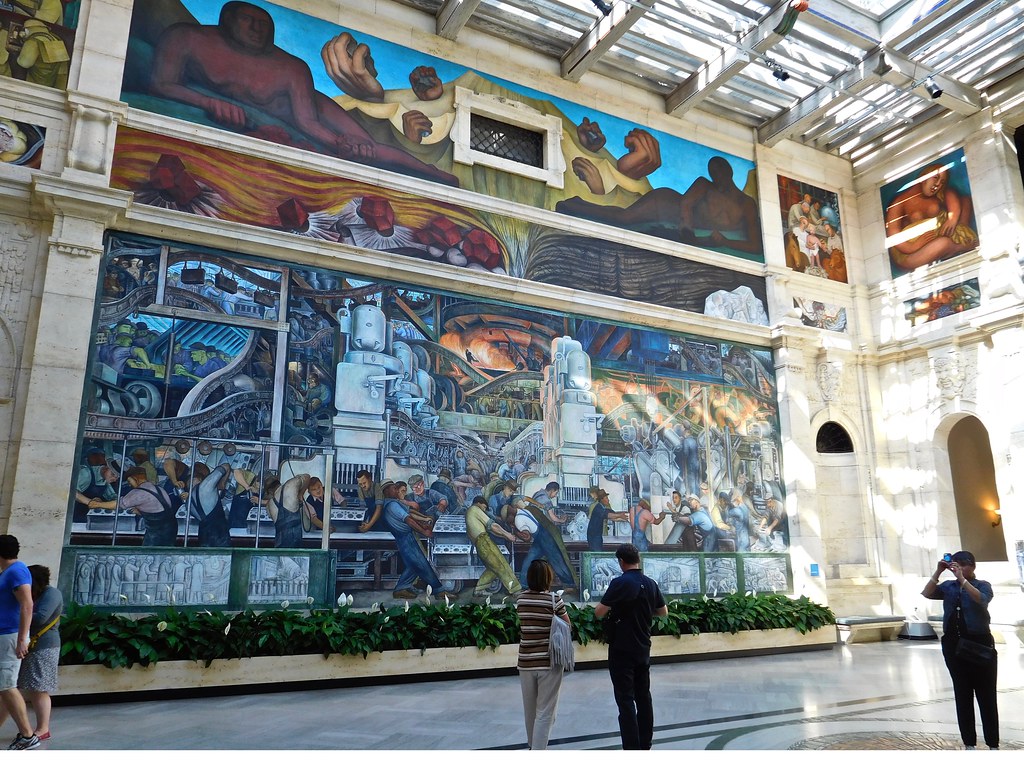
MAKE A MURAL
Use sidewalk chalk to create a mural by yourself or with your family. Your canvas could be your driveway, sidewalk or even your wooden fence! Create an image that may inspire people in your neighborhood to rise up and make changes within our community.
Frida Kahlo (1907-1954)
Frida was born in Coyoacán, Mexico City, Mexico and is viewed as a radical feminist icon who created works that were born out of passion and pain. She is known for her vibrantly colored portraits and self-portraits inspired by nature and Mexican popular culture as well as the complexities of her personal life. Frida’s work explored identity, gender, class and race in Mexican society. Her style could be described as bold, dream-like, symbolic and strategically striking in its beauty.
Frida’s former bright-blue house was one of the first homes in Mexico designed to be a functional space of living, creating, and displaying the work of her and her partner, Diego Rivera. La Casa Azul is located in the Colonia del Carmen neighborhood of Coyoacán in México City and has been transformed into a museum dedicated to the life and art of Frida Kahlo.
Frida’s wardrobe was an expression of her heritage, identity and personal struggles. Explore some of her most iconic pieces that are displayed at the Museo Frida Kahlo.
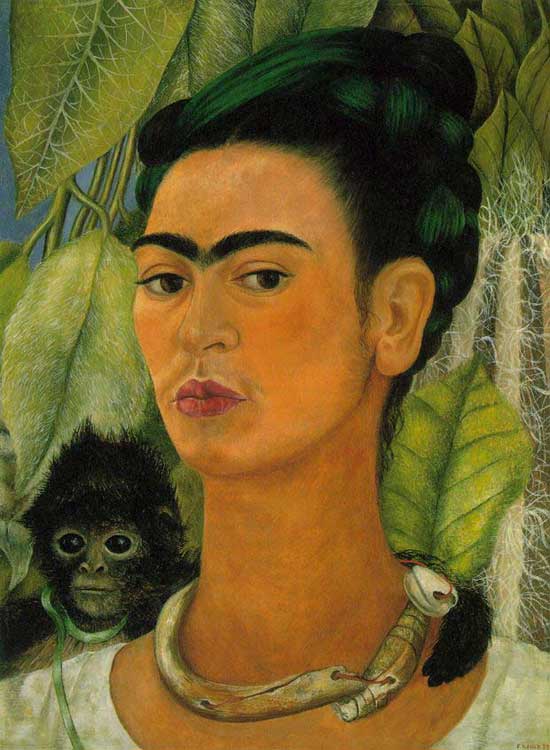
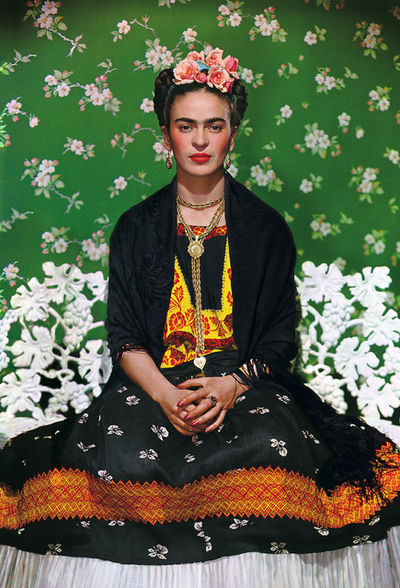
MAKE A SELF PORTRAIT
Create a self-portrait using whatever art supplies you may have on hand. You could use paper, cardboard or even the blank side of a cereal box as your canvas. Your art could be created with any combination of art supplies such as pencils, colored pencils, crayons, pastels, paint, etc. Using a mirror to admire your facial features can be a helpful guide as you create an image of yourself. You could also create your picture based on the image you have of yourself in your heart and mind. After creating your self-portrait, add images that may help you to express who you are even further. The pictures don’t have to make sense to anyone else but you! Think and create as though you are in a world of fantasy and wonder.
DREAMERS
Yuyi Morales is an author and illustrator of many notable and award-winning children’s books including Viva Frida, Little Night, Niño Wrestles the World and Dreamers, among many others. Dreamers is a non-fiction picture book in which Morales shares her immigration story of resilience and love with brilliant imagery and symbolism. She also shares how her experience with a public library helped her and her son feel connected to their new community.
What are the dreams that you have for your future self and future generations? Write about them!
YPSI WRITES POETRY
Voice is what makes a poem unique — it is made up of the words a poet uses, the way a poet puts the poem on the page, and the ideas a poet writes about. When we write our own poems, we think about how we can take a poet’s voice and honor it, talk to it, turn it inside out. Get inspired by these Latino poets and write your own poem with the instructions below.
Five Directions to My House
Juan Felipe Herrera – 1948-
- Go back to the grain yellow hills where the broken speak of elegance
- Walk up to the canvas door, the short bed stretched against the clouds
- Beneath the earth, an ant writes with the grace of a governor
- Blow, blow Red Tail Hawk, your hidden sleeve—your desert secrets
- You are there, almost, without a name, without a body, go now
- I said five, said five like a guitar says six.
Credit: From poetry.org, Half the World in Light: New and Selected Poems. Tucson: University of Arizona Press, 2008.
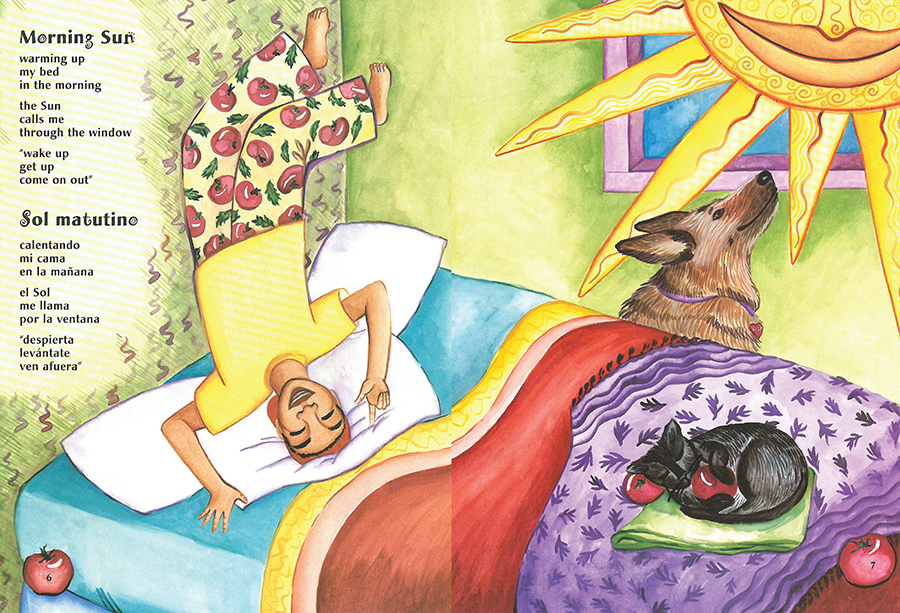

This Is Just To Say
William Carlos Williams (1883 – 1963)
I have eaten
the plums
that were in
the icebox
and which
you were probably
saving
for breakfast
Forgive me
they were delicious
so sweet
and so cold
Credit: Copyright © 1962 by William Carlos Williams.
Flower Song
Francisco X. Alarcón (1954-2016)
every tree
a brother
every hill
a pyramid
a holy spot
every valley
a poem
in xochitl
in cuicatl
flower and song
every cloud
a prayer
every rain
drop
a miracle
every body
a seashore
a memory
at once lost
and found.
we all together—
fireflies
in the night
dreaming up
the cosmos
Credit: From poetry.org, Snake Poems An Aztec Invocation, by Francisco X. Alarcón (University of Arizona Press)
Like You
Roque Dalton (1935-1975), translated by Jack Hirschman
Like you I
love love, life, the sweet smell
of things, the sky-blue
landscape of January days.
And my blood boils up
and I laugh through eyes
that have known the buds of tears.
I believe the world is beautiful
and that poetry, like bread, is for everyone.
And that my veins don’t end in me
but in the unanimous blood
of those who struggle for life,
love,
little things,
landscape and bread,
the poetry of everyone.
Credit:From poetry.org, Poetry Like Bread: Poets of the Political Imagination (Curbstone Press, 2000), edited by Martín Espada.
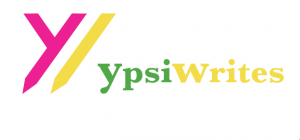
LISTEN TO MARIACHI MUSIC
Mariachi is a musical ensemble composed of a variety of instruments that often include the Guitarrón, Vihuela Mexicana, Harp, Guitar, Violin, Trumpet, and Voice. In addition to referring to the ensemble, Mariachi is also used as an identifying term for the individual performer of Mariachi.
Watch and listen to this contemporary Mariachi performance of Mexicana Hermosa by Natalia Lafourcade featuring Carlos Rivera and see how many different Mariachi instruments that you can identify.
Can you spot these instruments in the video? What other instruments do you see?
Trumpet

Violin

Accordion

Guitarrón
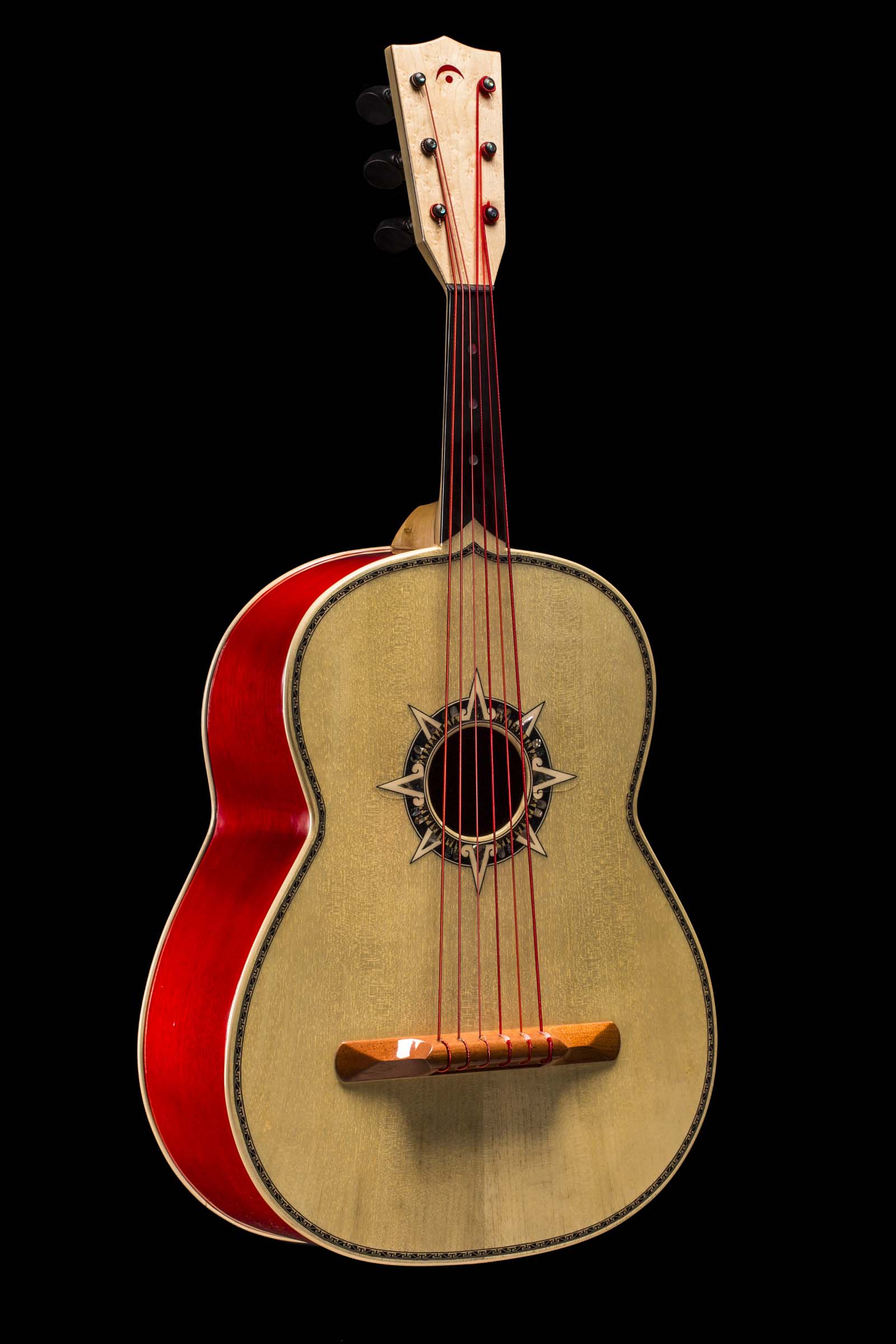
LET’S MAKE TORTILLAS
INGREDIENTS
-
2 cups masa harina
-
2/3 teaspoon salt
-
1 1/2 cups hot water, plus more if necessary
-
1 teaspoon olive oil*
EQUIPMENT
-
1 gallon-size Ziploc bag
-
Tortilla Press, or other heavy bottomed dish or pot to press the dough between two pieces of parchment paper
INSTRUCTIONS
Add 2 cups masa harina and 2/3 teaspoon salt in a large bowl. Mix together with a spoon. Pour 1 1/2 cups hot water and 1 teaspoon olive oil into the bowl and mix together until all the water is absorbed.
Using your hands, form the dough into a big ball. The dough should be firm and springy when touched, not dry or super sticky. If the mixture is too dry, add more water in small amounts until the dough is springy and holds together. Place the dough ball in the bowl and cover it with a clean kitchen towel or plastic wrap. Let the dough rest for 20 minutes. This will help ensure that all the water gets absorbed.
Divide the dough into 12 equal pieces. Roll each piece into a ball with the palms of your hands and place them in the mixing bowl. Cover the bowl with a clean kitchen towel or plastic wrap to keep the balls moist while you’re working.
Preheat a griddle or large nonstick skillet over medium-high heat.
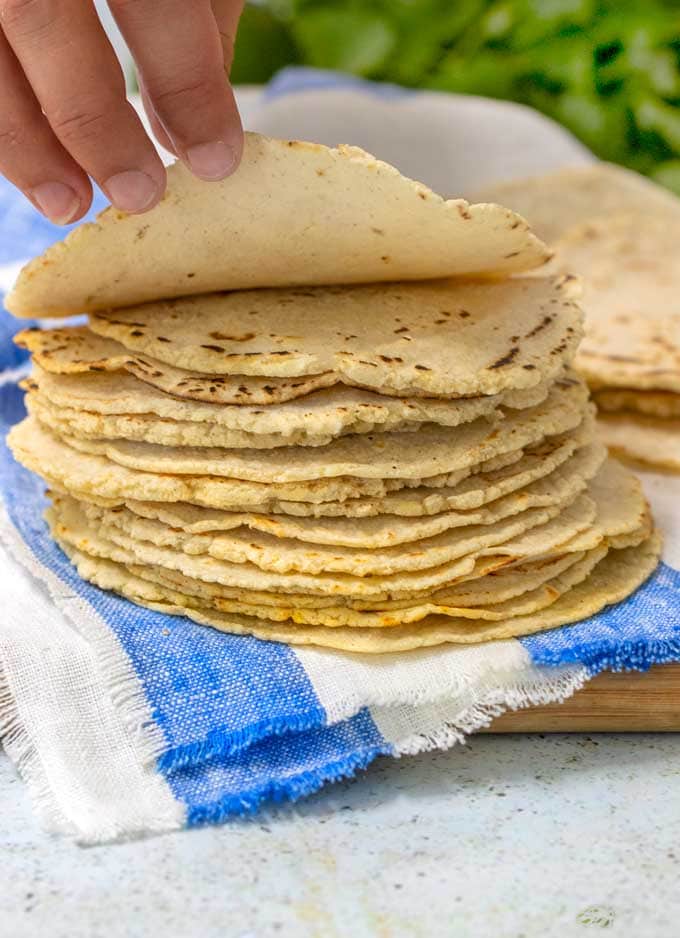
Find more Mexican recipes from the collection of Mexican Cookbooks at the University of Texas San Antonio. They made some historic recipes accessible digitally through a series of mini cookbooks. The first is all about desserts. Click the button below to see more.
Open the gallon-sized Ziploc bag and cut the seams on each side so that it makes one large rectangular piece of plastic. Open the tortilla press and lay the plastic inside of it so that it covers the upper and bottom parts of the tortilla press. Place one dough ball in the middle of the tortilla press, close the top and gently press to flatten it out. Open the tortilla press and peel back the Ziploc bag to transfer the tortilla to your hand. Place the flattened tortilla onto the hot skillet and cook for 20 seconds. Flip it over and cook for 20 more seconds to seal in the heat. Flip it over again and cook for about 40 seconds or so, until the tortilla starts to bubble or puff up and beautiful brown marks form. Flip over one last time and cook until beautiful brown marks form. Remove the tortilla and place it in a tortilla warmer or loosely wrap in a clean kitchen towel that’s placed inside a large Ziploc bag to keep it warm. Continue cooking the remaining tortillas.
Serve immediately or store in a large Ziploc bag in the fridge for up to 10 days.
MONARCH BUTTERFLIES
Every year hundreds of millions of monarch butterflies embark on a journey of up to 4,500 miles! This remarkable migration is unlike that of any other creature in the world and takes at least four generations of butterflies to complete.
Watch this video to experience the magic of their journey.

Now set out on your own journey. Go on a nature walk in your neighborhood or even in your own backyard. Count how many butterflies you see and record your findings. Go out again throughout the week and keep track of how your count changes and where you usually see the most butterflies.

